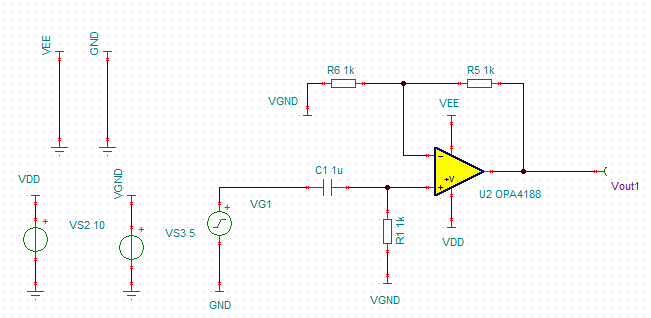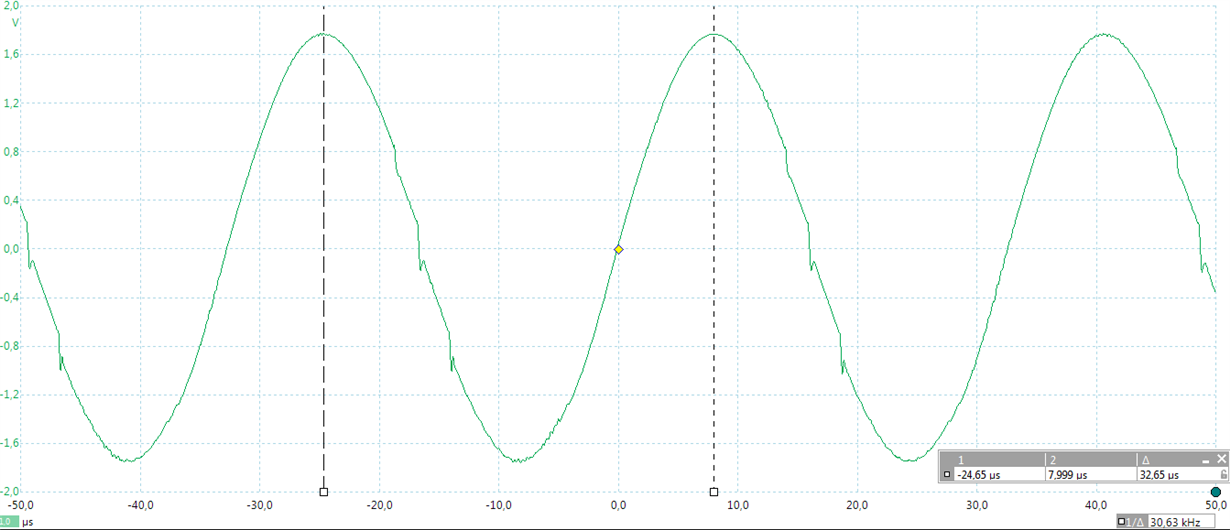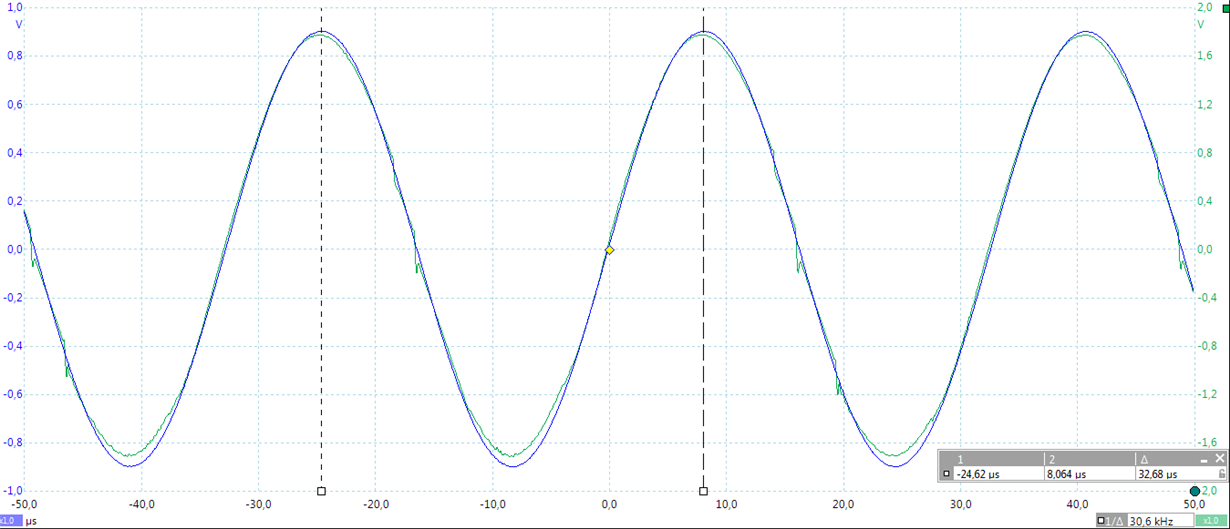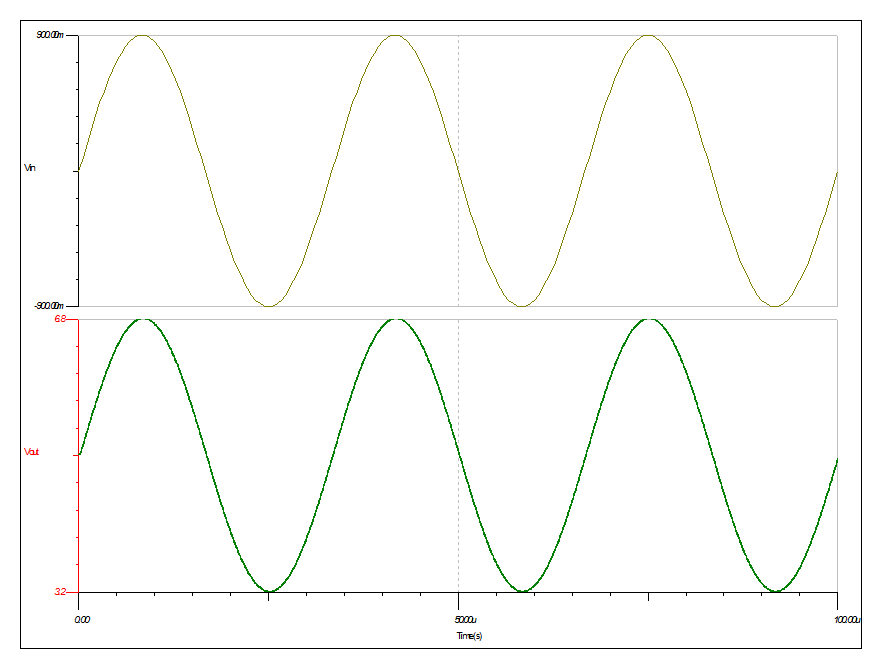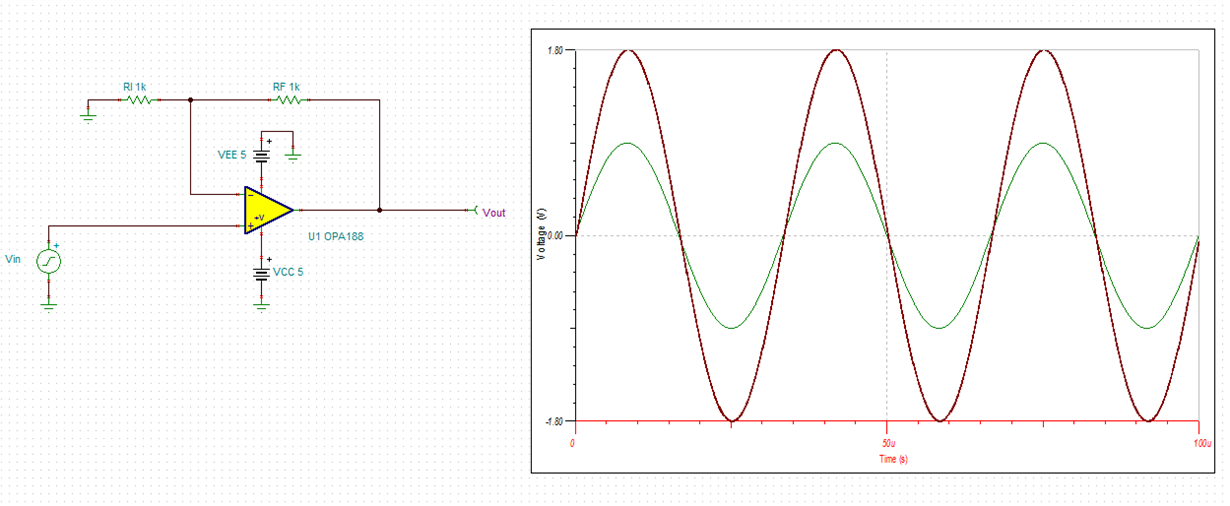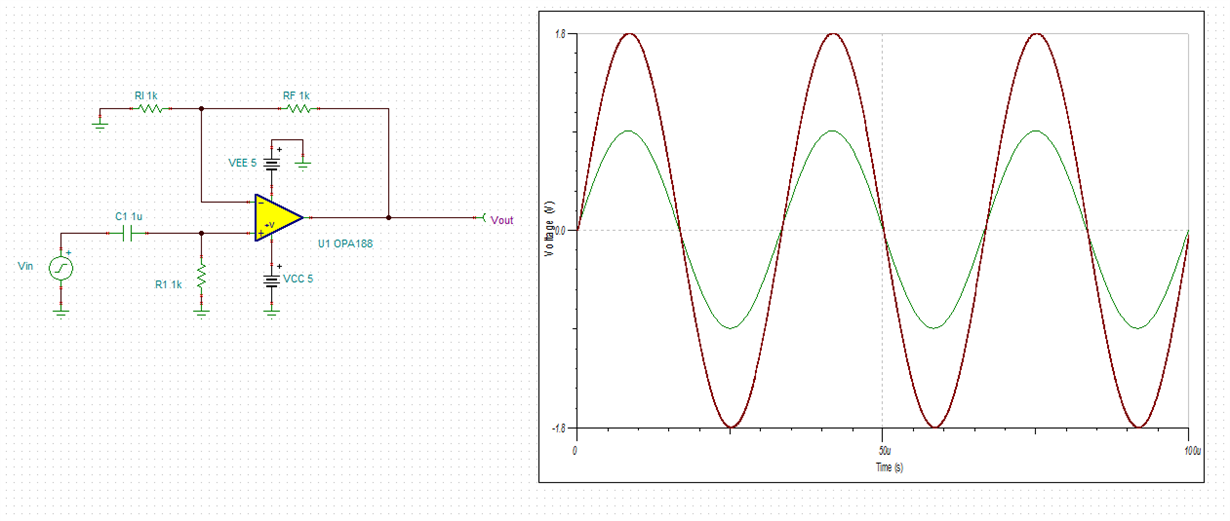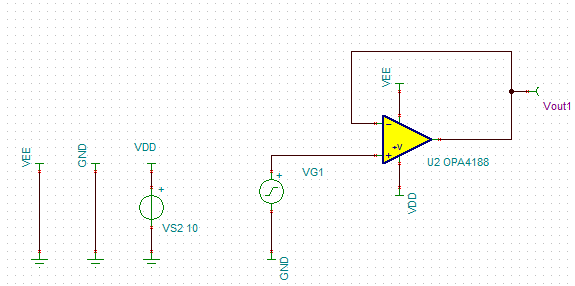Other Parts Discussed in Thread: TINA-TI, OPA188, OPA1654
Hi,
I am designing an amplifier with the OPA4188 and I have strange results. The circuit works a expected except a strange distortion. Here is the test circuit :
The input is a sine wave of 1.8V peak to peak at 30Khz. Here is the output signal (Vout1 AC coupled) :
As you can see there are distortions on the "falling edge" of the sinus. This distortion depends of the signal frequency and the signal amplitude, it is less visible in lower frequencies but it is still here.
Here is the output (green) plot superposed with the input (blue):
We can see another effect of the distortion : the output doesn't follow correctly the input in the negative side.
The circuit has been designed on a PCB, the power supply is decoupled by a 100nF capacitor and the output is not loaded. As there is no load there is no reasons that make the op amp unstable, I verified and there is no overshoot. I tried with different configuration : dual power supply, simple follower, different resistor values, ... and the problem is still present.
Could it be a measurement problem? I tried to measure Vout1 trough a 1Kohm resistor and the problem is less visible. Still it doesn't make sense that a probe can distort the output at 30Khz. I measured with a PicoScope 3425 and a Tektronics TDS1002 the results are equivalent.
Did someone has already seen this kind of behaviour? Do you have any recommendation?
Regards,
Mickaël


